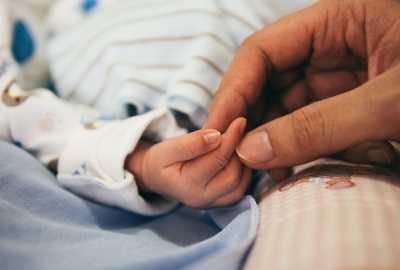
Our work focuses on three main areas of early childhood care and education. For all areas, we assess the current landscape of services in a city or state and, based on a robust body of research evidence on high-quality early childhood programs, identify the services and estimate the additional investments that are needed to expand and knit together a comprehensive infrastructure to serve children birth through age five.
Background: The period in children’s lives before they enter public education has historically received little public investment in the United States, despite the developmental importance of these early years. During the very period when brain development is most sensitive to environmental influence, the cost of out-of-home care is at its highest, and is largely borne by families without public support. In addition, the quality of the care available during this period is at its lowest, on average, especially for disadvantaged families. As a result, most working parents struggle to find and afford high-quality, nonparental early care and education, particularly for infants and toddlers, for children with special needs, or care during non-traditional hours (e.g., nights, weekends). For many children, the lack of affordable, accessible, and good-quality early care and education represents a lost opportunity to have the enriching early childhood experiences and interactions that can build a solid foundation for school readiness and later success. The problems in accessing affordable, high-quality child care have existed long before the COVID-19 pandemic and its economic fallout, but the pandemic has highlighted the sector’s vulnerability and its importance to our economy and future workforce, and has exacerbated the inequalities in access.
Cradle to Kindergarten Process and Priorities:
- Calculating “demand” in the current context by using metrics of working parents and eligible families as proxies
- Identifying elements of the current design that are most constraining parents (for example, copays)
- Providing background information on why raising the rates does not always trickle down to provider compensation
- Evaluating and discussing the need for contracted care in the current context
- Detailing how best to stimulate supply in the current context
- Analyzing and outlining how the proposed steps will impact the economy and workforce to have a childcare guarantee
Background: There is widespread recognition of the importance and value of early learning, as signaled by the increase in private preschool enrollment by families with the resources to pay and the high support for preschool in public opinion polls and ballot box initiatives. However, preschool access and quality are currently very uneven, and public investment in preschool access and quality remains minimal. Children in families with incomes in the bottom three quintiles of the income distribution are mostly attending one year of public preschool where it is available, while the majority of families in the top quintile of family income are most often receiving two or more years of private early education for their children. Further, investment in the type of quality that matters most for child development—quality of teaching and interactions—is also minimal, and high-quality preschool is simply out of reach for many U.S. familiesTo level the playing field and to invest in the human capital of our youngest citizens, the United States must extend access to high-quality preschool to all three- and four-year-old children.
Cradle to Kindergarten Process and Priorities:
- Ensuring that supply meets demand
- Providing and organizing the most current empirical evidence on why serving 3 year olds is important too
- Ensuring the aspects of quality shown to be most important for ensuring high quality in the evidence base
- Full day
- Pay parity
- Evidence-based curricula
- Coaching
- Mixed auspice
- Providing options for program scale up based on landscape analyses by demographics, counties, and other geographic factors
Background: A growing body of research demonstrates the importance of first years of life for later health and other outcomes, but adversity and chronic or toxic stress among children or parents can interrupt the formation of healthy relationships and affect development. For many disadvantaged or at-risk children and families, developmental supports during the prenatal period and the first three years of life can help promote range of health and other outcomes. Birth-to-three developmental services also offer an opportunity to build a stronger infrastructure for identifying and assessing children and families’ needs early and coordinating supports accordingly.
Cradle to Kindergarten Process and Priorities:
- Developing strategies for identifying target groups or geographies that may benefit from more intensive services, including risk factor and other data-based methods
- Considering universal and targeted approaches to screening and assessments (e.g., Family Connects, Help Me Grow), based on landscape assessments and current context
- Providing guidance for considering or expanding targeted developmental supports (e.g., Early Head Start, home visiting)
- Estimating the potential range of take-up rates of birth-to-three developmental and support services

